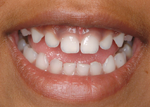
How Can You Handle Sensitivity After Dental Filling?
Dental Filling:
Dentists use dental fillings to treat cavities. Cavities are decaying areas on teeth. It is a hole in tooth growing bigger and deeper over time. While treating cavities with dental fillings, the dentist will fill cavities with amalgam or composite. It is a simple procedure. However, after this procedure, the patient might have sensitive teeth. This sensitivity will go away within a few days or weeks. The severity and healing of sensitivity depending on the causes of sensitivity.
What to Expect After a Dental Filling? :
Before performing this procedure, the dentist will numb the area around the tooth. So, most likely, you are not going to feel anything during and one or two hours after the procedure. As the numbness goes away, some unusual sensations are expected in the mouth.
These Sensations Include:
- Eating cold or hot foods, drinking cold or hot liquids and breathing in cold air can lead to pain in your teeth
- Tenderness in gums
- Clenching teeth can cause pain
- Pain in the teeth around the filling
- Eating, flossing or brushing can lead to pain in the affected tooth
Causes of Tooth Sensitivity After a Dental Filling:
Following are the five causes of tooth sensitivity after a dental filling:
Change in Bite:
You might find that after receiving dental filling treatment, the tooth with the cavity has become taller than other teeth. This can put pressure on the treated tooth when you close your mouth. This will cause pain in the mouth. Biting can lead to the cracked filling. If biting is causing any problem, see your dentist as soon as possible.
Pulpitis:
The amalgam or composite is applied on the cavity after removing the decayed part of the affected tooth. This is done by drilling the tooth. Heat due to drilling can inflame the pulp. The pulp is the connective tissue forming the center of the teeth. This can cause pulpitis. It is important to remove decaying tissues. Otherwise, the decaying tissue will cause infection in the pulp. You might notice a pocket of pus near the affected teeth. Gum swelling is another sign of this infection.
Following Are the Two Types of Pulpitis:
- Reversible pulpitis
- Irreversible pulpitis
In reversible pulpitis, pulpitis will be healed on its own but tooth will be sensitive.
Irreversible pulpitis will not be healed and you will need root canal treatment.
Multiple Tooth Surfaces :
Different surfaces in your mouth can cause sensitivity or pain in your mouth. One of your teeth has a gold crown and the tooth opposite to this tooth has a silver filling. This will lead to an odd sensation in your mouth especially when both teeth touch
Referred Pain:
You should also expect pain in the teeth adjacent to the affected tooth. You are likely to feel referred pain.
Allergic Reaction:
An allergic reaction to composite or amalgam can lead to sensitivity after a dental filling. One can also notice itching and rashes. If you notice any sign of an allergic reaction, call your dentist and get dental filling redone. This time get it done using some other material.


